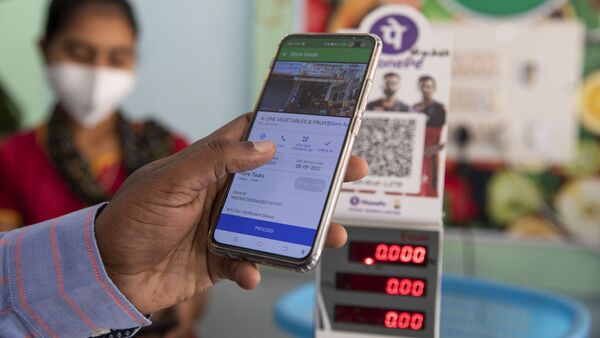I am fortunate to have been present on at least two occasions when Nandan Nilekani made speeches about the future direction of technology that turned out to be remarkably prescient. The first was in 2005, at the ITechLaw conference in Bangalore, where, well before any of this was obvious, he predicted that because of the falling costs of data storage and the rapid acceleration in availability of bandwidth, there would be a shift in products and services from the desktop to the cloud. At the time, a good two years before Apple launched its iPhone, we were chained to our desks, and the conveniences of our ‘always online’ lives today seemed like an impossible dream.
The second was in 2017, when he first shared the idea of Data Empowerment and Protection Architecture (DEPA) with the world. That was the first time I’d heard him say that Indians would be data-rich before they became economically wealthy, and that we had to find a way for them to unlock the value inherent in their data. Today, DEPA is operational in the financial sector and, with 1.1 billion accounts, is the world’s largest open banking rollout. Having processed over 5 million transfer requests in the short time that it’s been around, it is transforming the way Indians avail of financial services.
Last week at the People Plus AI event in Bangalore, it felt like I was listening to a third such speech.
While delivering his keynote address, Nandan suggested that this current moment in artificial intelligence (AI) will, when we look back in history, be counted as the next big inflection point in the digital transformation of the country. Despite all we have achieved with Digital Public Infrastructure (DPI), there were, he pointed out, numerous challenges that remain insurmountable using our current approach. Thanks to recent AI advances, this is about to change.
His optimism came from the fact that different and disparate efforts have, through a happy coincidence, matured at roughly the same time. On the one hand, advances in generative AI have made it possible for us to interact with information in a far more human way than was previously possible. At the same time, thanks to the AI-powered language translation capabilities that India has built with its Bhashini AI engine, language will no longer be the barrier that it once was. What this means is that we will now be able to give every person in the country, regardless of their literacy levels or familiarity with digital technologies, access to all that AI can do for them through a simple conversational interface.
We are already seeing examples of what this sort of innovation might look like. The Jugalbandi project uses GPT to build WhatsApp or Telegram chatbots that citizens can use to ask questions about their eligibility for a government scheme or benefit. When coupled with the language translation capabilities of Bhashini, what this will mean is that every last person in the country will be able to avail this facility in the language one is most comfortable speaking—by just asking a question out loud into the app.
While we have made considerable progress in the field of education, getting content to the remotest parts of the country using digital public infrastructure, we still have a long way to go when it comes to improving learning outcomes. Today, AI makes it relatively trivial to build adaptive education systems that can meet the specific needs of individual learners—in whichever language the student is comfortable. This will allow us to discard the one-size-fits-all approach we’ve used so far for more bespoke education. A project like this is currently being piloted in the Kuthulam district in Tamil Nadu with considerable success.
Dozens of similar examples abound across a range of different sectors in the country. The fortuitous congruence of these two AI developments has sparked a wave of innovation, the likes of which I have not seen before.
Unlike other countries where AI is being seen as a threat either because of the jobs it will displace or the exclusions it will cause, for India AI represents a new opportunity to accelerate development objectives. DPI made it possible for us to leapfrog traditional development cycles to get us to where we are today. AI will bring about a similar orbit shift in the pace at which development takes place in the country.
That said, our use of AI will not be without challenges. We already know of biases implicit in AI decisions and the privacy challenges that will come from using conversational AI. We will have to address these issues as we go down the path of using AI more fully in our lives, and if we want to ensure that this technology conforms with our democratic values.
Around the world, courts and regulators have begun to crack down on AI, invoking new interpretations of existing laws to curtail its use. It is only a matter of time before we too are called upon to decide on these issues. When we do, it will be important to arrive at a regulatory approach that appropriately reflects our own circumstances so that any decision we take strikes the right balance between protecting individual rights and liberties while ensuring that we are able to extract as much as possible out of all that these new technologies have to offer.
Whenever I have heard Nandan prognosticate about the future direction of technology, the predictions he made have come true. I have a good feeling that his latest one will as well.
Rahul Matthan is a partner at Trilegal and also has a podcast by the name Ex Machina. His Twitter handle is @matthan
Download The Mint News App to get Daily Market Updates.
More
Less
#digital #journey #major #inflection #point
